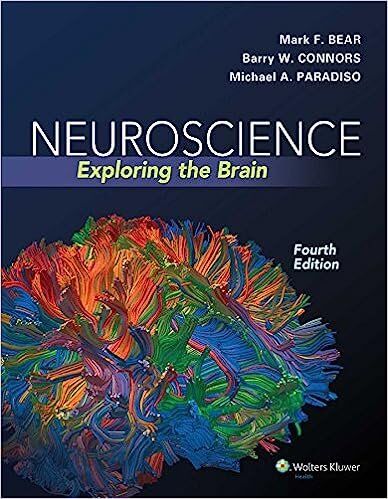Test Bank for Neuroscience 2015
1. What does the “neuron doctrine” state? Choose the correct option.
A) Neurites of different cells fuse together to form a continuous reticulum.
B) Individual cells communicate by contact and not continuity.
C) The cell body of a neuron contains organelles.
D) The elementary functional unit of all tissues is the individual cell.
2. What is a primary function of MAPs? Choose the correct option.
A) Regulate the function and assembly of microtubules
B) Regulate the function and assembly of microfilaments
C) Regulate the function and assembly of neurofilaments
D) Regulate the function and assembly of cytoskeleton
3. Neurons comprise two main structures: axons and dendrites. What is a major difference
between the two? Choose the correct option.
A) Dendrites are of uniform diameter throughout, whereas axons taper to a point.
B) Dendrites receive incoming signals from other neurons, whereas axons carry the
output of neurons.
C) A cell body gives rise to a single dendrite and multiple axons.
D) Dendrites travel long distances, whereas axons are always short.
4. A scientist looks through a microscope at the structure of a neuron. The scientist notices
a layer of molecules separating the neuron’s intracellular space from the extracellular
space. What is this part of the neuron known as? Choose the correct option.
A) Organelle
B) Soma
C) Neuronal membrane
D) Nuclear envelope
5. What do you understand by the term translation? Choose the correct option.
A) Assembling a piece of mRNA
B) Assembling proteins from amino acids
C) Removal of introns and specific exons
D) The “reading” of DNA
6. What is the most important function of the rough endoplasmic reticulum? Choose the
correct option.
A) RNA splicing
B) Post-translational protein processing
C) Site of protein synthesis
D) Cellular respiration
7. What does the mitochondrion “inhale”? Choose the correct option.
A) Pyruvic acid
B) Cytosol
C) Adenosine triphosphate
D) Amino acids
8. Identify an important difference between the cytoplasm of the axon and that of the axon
terminal. Choose the correct option.
A) Axon terminals have more microtubules.
B) The axon has more synaptic vesicles than the axon terminal.
C) Ribosomes are present in the axon terminal.
D) There are large numbers of mitochondria in the axon terminal.
9. What is the function of a neurotransmitter receptor in the dendritic membrane? Choose
the correct option.
A) Release synaptic vesicles
B) Detect neurotransmitters
C) Destroy extra neurotransmitter left in the synaptic cleft
D) Form gap junctions
10. Identify the protein that helps anterograde transport move materials from the soma to
the terminal. Choose the correct option.
A) Dynein
B) Kinesin
C) Pyruvic acid
D) MAP
11. Which of the following is the largest of the cytoskeletal elements? Choose the correct
option.
A) Microfilament
B) Neurofilament
C) Microtubule
D) Tubulin
12. What is retrograde axoplasmic transport? Choose the correct option.
A) Movement of material from axon terminal to soma
B) Movement of material from soma to axon terminal
C) Movement of material within the synaptic terminal
D) Movement of material among axon collaterals
13. Some neurons have long axons that stretch from one part of the CNS to another. What
are these called? Choose the correct option.
A) Interneurons
B) Golgi type II neurons
C) Golgi type I neurons
D) Motor neurons
14. What is the region where the axon begins? Choose the correct option.
A) Soma
B) Axon hillock
C) Axon collateral
D) Axon terminal

Reviews
There are no reviews yet.